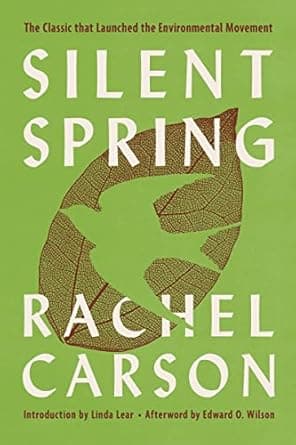
Book Stats
456
Upvotes
43
Downvotes
+413
Net Score
Silent Spring
by Rachel Carson
Description
Carson's groundbreaking expose of the environmental damage caused by pesticides, launching the modern environmental movement and leading to the banning of DDT.
Rachel Carson's devastating critique of pesticide use revealed how chemicals designed to kill insects were poisoning entire ecosystems, threatening wildlife and human health. Through careful scientific analysis and lyrical prose, Carson showed how DDT and other pesticides were accumulating in food chains and causing widespread ecological damage.
Carson's background as both a scientist and a writer allowed her to present complex ecological concepts in accessible, compelling language. Her famous opening chapter, "A Fable for Tomorrow," describes a town where spring has become silent because pesticides have killed all the birds—a powerful image that captured public imagination.
The book's scientific argument centers on the concept of bioaccumulation—how pesticides become concentrated as they move up food chains, affecting predators far more severely than the insects they're meant to control. Carson's documentation of bird population declines, particularly among raptors like eagles and falcons, provided clear evidence of pesticides' unintended consequences.
Carson's critique extends beyond environmental damage to question the entire philosophy of chemical control. She argues that the attempt to dominate nature through chemistry is both futile and dangerous, advocating instead for biological control methods that work with natural systems rather than against them.
The book's impact was immediate and dramatic. Chemical companies launched fierce attacks on Carson's credibility, but scientific evidence supported her conclusions. Public pressure generated by *Silent Spring* led to restrictions on DDT use and the eventual creation of the Environmental Protection Agency.
Carson's writing style combines scientific rigor with emotional appeal, showing how environmental destruction affects not only wildlife but human communities. Her chapters on cancer and other health effects connected environmental protection to human welfare, broadening the constituency for conservation.
Silent Spring is widely credited with launching the modern environmental movement, inspiring Earth Day and countless environmental organizations. It demonstrated that scientific expertise combined with effective communication could challenge powerful industries and change public policy, establishing a model for environmental advocacy that continues today.